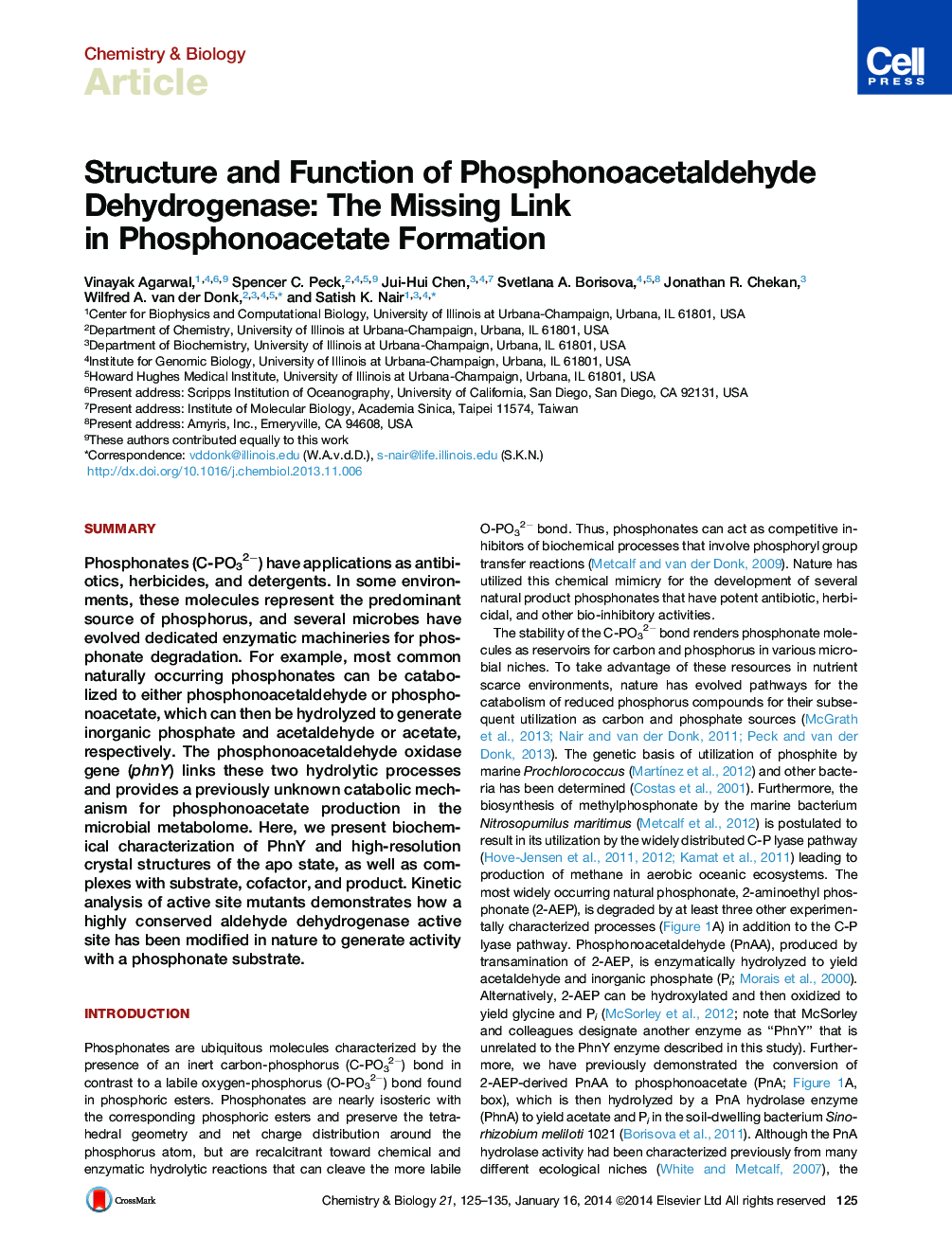| کد مقاله | کد نشریه | سال انتشار | مقاله انگلیسی | نسخه تمام متن |
|---|---|---|---|---|
| 1391112 | 983196 | 2014 | 11 صفحه PDF | دانلود رایگان |
• Characterization of the enzyme involved in phosphonoacetate formation
• Crystallographic and kinetic data establish rationale for phosphonate tolerance
• Observation of a covalent thiohemiacetal intermediate
SummaryPhosphonates (C-PO32−) have applications as antibiotics, herbicides, and detergents. In some environments, these molecules represent the predominant source of phosphorus, and several microbes have evolved dedicated enzymatic machineries for phosphonate degradation. For example, most common naturally occurring phosphonates can be catabolized to either phosphonoacetaldehyde or phosphonoacetate, which can then be hydrolyzed to generate inorganic phosphate and acetaldehyde or acetate, respectively. The phosphonoacetaldehyde oxidase gene (phnY) links these two hydrolytic processes and provides a previously unknown catabolic mechanism for phosphonoacetate production in the microbial metabolome. Here, we present biochemical characterization of PhnY and high-resolution crystal structures of the apo state, as well as complexes with substrate, cofactor, and product. Kinetic analysis of active site mutants demonstrates how a highly conserved aldehyde dehydrogenase active site has been modified in nature to generate activity with a phosphonate substrate.
Journal: - Volume 21, Issue 1, 16 January 2014, Pages 125–135
